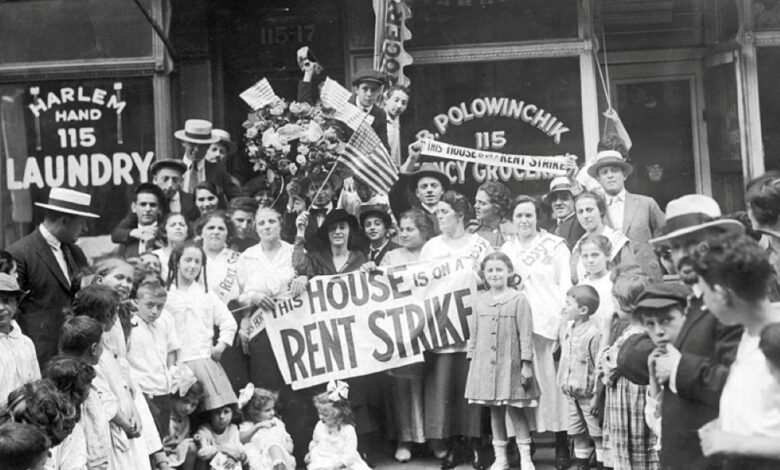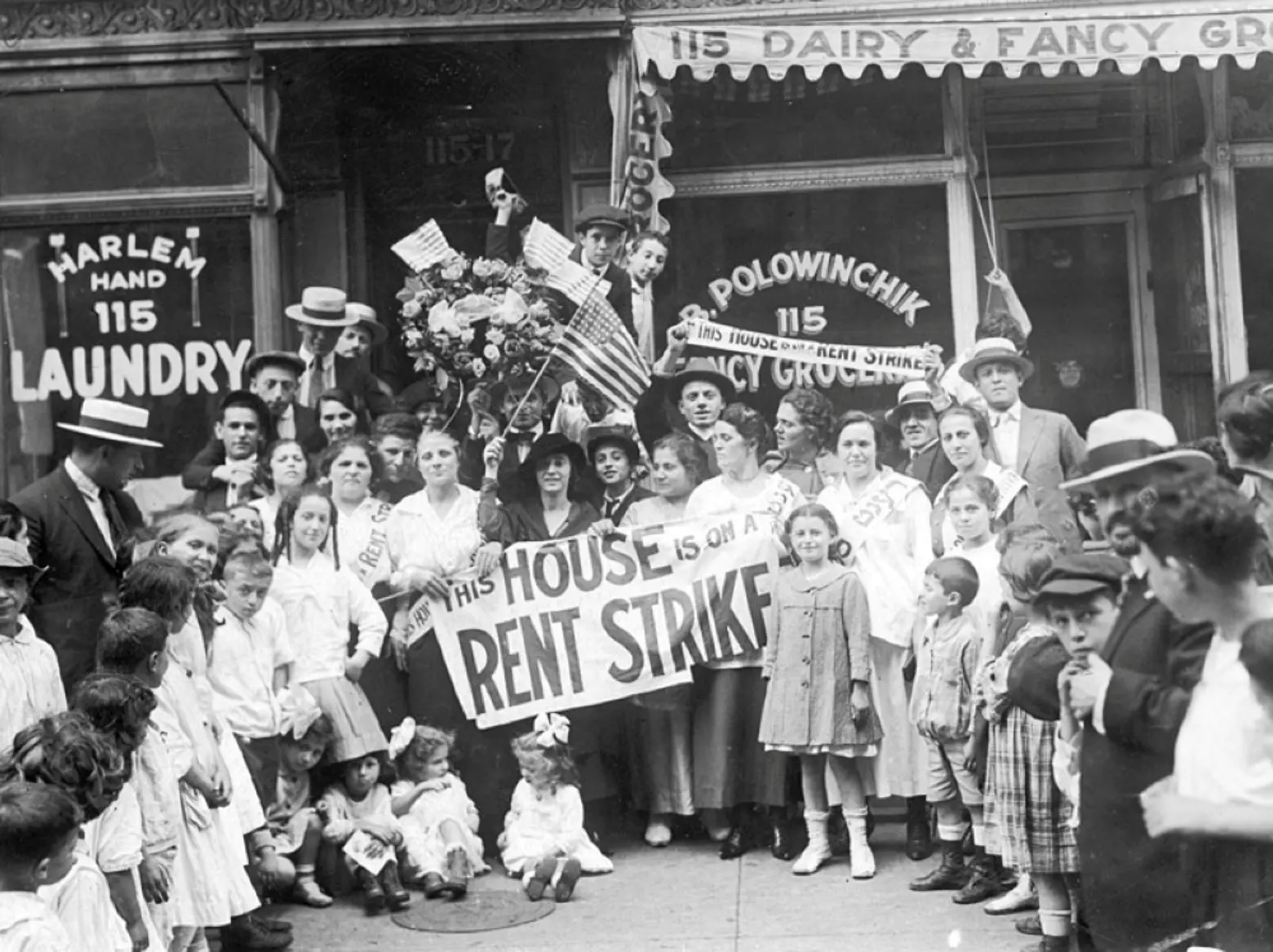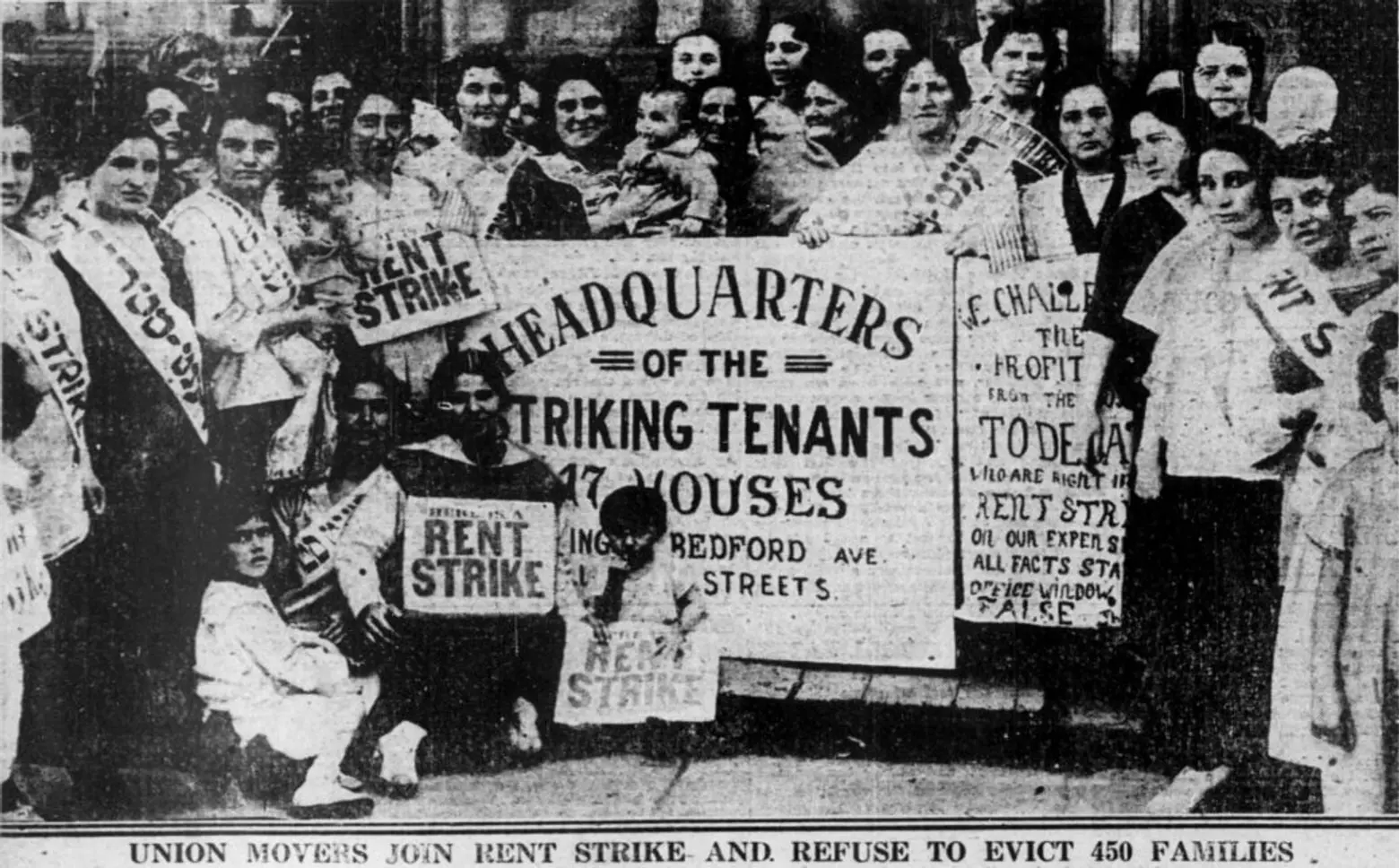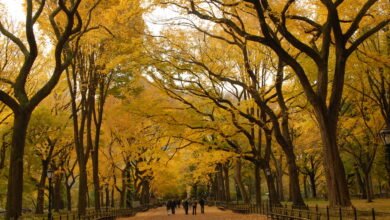New MCNY exhibit traces a century of NYC housing activism


A rent strike in Harlem, September 1919. Photo via WikiCommons
While New York City’s current housing crisis has pushed rents to all-time highs and the vacancy rate to an all-time low, it’s not a new problem. New Yorkers have been rallying for more affordable housing and tenant protections for over a century. A new installation at the Museum of the City of New York, “Housing Activism: Rent Strikes and Tenant Mobilizations, 1908-1939,” explores the rich history and lasting impact of tenant organizing in the early 20th century through photographs, drawings, flyers, and other artifacts. The installation covers a period of immense housing pressure, harsh winters, overcrowded tenements, and soaring rents—and the grassroots movements that helped win many of the tenant protections still in place today.

The installation covers the infamous winter of 1917, when brutal cold and housing shortages, intensified by World War I, forced tenants to scrounge for coal on the streets and plead with landlords for heat. Housing development had stalled as the war effort claimed much of the available lumber and other building materials, according to the New York Times.
In response, New Yorkers banded together to demand better living conditions and cheaper rents through strikes, forming unions, and other mobilization efforts. These strikes, often led by working-class immigrant women in Eastern European Jewish communities, held landlords accountable and helped draw attention to the city’s housing crisis.
Although these movements faced political backlash during the Red Scare of 1919 due to their socialist ties, they helped spark a broader campaign for rent regulation, leading to the passage of New York’s first rent control laws in 1920.
Within a few years, the state required landlords to keep homes heated to at least 68 degrees in winter, established housing cooperatives and other programs, and passed emergency measures that laid the groundwork for modern statutes limiting rent increases in certain buildings.
The new installation brings these efforts to life through a diverse selection of historic artifacts, including a 1919 photograph of a Harlem building on rent strike, archival flyers, and housing reform legislation, an architectural drawing from a renovated tenement, and a sewing kit from a mid-century housing cooperative.
Other notable pieces include coal scuttles—used to collect spare coal from the streets during the winter months of the early 20th century. Tenement residents often had to find their own coal and shovel it into stoves that heated only a few rooms at a time, according to the Times.
An 1889 photograph by Jacob Riis captures life inside a tenement on Bayard Street in Manhattan, where European immigrants lived in cramped quarters and often slept in shifts.
The exhibition also illustrates how housing activism has evolved, from its early perception as a radical cause to its adoption as mainstream policy endorsed by city and state lawmakers.
Other key moments explored in the installation include early rent strikes at the turn of the 20th century, the 1919 rent strike wave, the formation of the City-Wide Tenants Council in the 1930s, and the emergence of cooperative housing and early public housing initiatives. The exhibition also connects this history to more recent movements during the Covid-19 pandemic.
Many of the issues these early reformers fought for remain pressing today, as the city grapples with a severe housing shortage and affordability crisis. The debate over housing costs has only intensified in recent months amid the city’s mayoral race. Assembly Member Zohran Mamdani, who won the Democratic primary in June, has pledged to push the Rent Guidelines Board to freeze rents for the roughly one million rent-stabilized apartments in the city if elected in November.
The installation is part of the MCNY’s “Activist New York” exhibition, the museum’s permanent gallery devoted to the history of activism. More than a decade ago, former organizer, veteran, and business owner Perry Rosenstein approached the museum with a vision for a dedicated activism gallery. Since its debut in 2012, the space has become a cornerstone of MCNY’s educational and public programming.
Additionally, the MCNY will debut a new section in “Activist New York” highlighting recent accessions, featuring photographs, ephemera, and other objects from historical and recent movements that have recently been added to the museum’s collection of over 750,000 objects.
RELATED:






